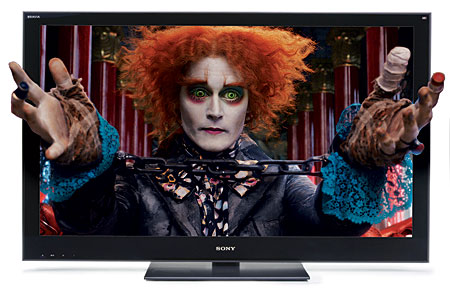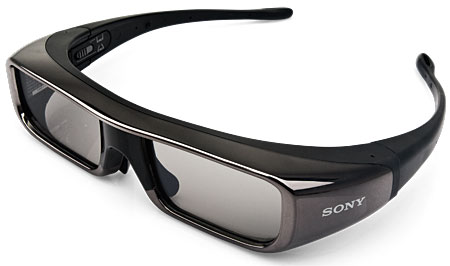Sony BRAVIA XBR-52HX909 LCD 3D HDTV
 Price: $3,600 At A Glance: LED backlighting with local dimming • Excellent color, resolution, and contrast • 2D-to-3D conversion • Compromised off-axis performance
Price: $3,600 At A Glance: LED backlighting with local dimming • Excellent color, resolution, and contrast • 2D-to-3D conversion • Compromised off-axis performance
3D for You and LED Too

HDTV makers are launching new 3D sets as fast at they can design and build them, and Sony’s 3D plans are as ambitious as any. The company has four new lines of LED 3DTVs. The BRAVIA XBR52HX909, at 52 inches wide, and a 46-inch sister model are its top offerings in these sizes. These are the only Sony 3D sets with LED dynamic backlighting—or LED local dimming. Local dimming is the best technology yet developed to produce dark, rich blacks from an LCD set.
In order for the HX909 models to do 3D, you must purchase both the 3D glasses and the outboard 3D Sync transmitter separately (see prices under “Specs”). While some buyers will see these separate purchases as a hassle, they also allow you to put off paying for these accessories until you’re ready for 3D—or until 3D is ready for you with more titles to choose from.
Local Dimmer
The backlighting that all LCD panels require has traditionally been composed of special fluorescent tubes. But the new hot ticket in town is LEDs. LEDs can be manipulated in various ways to improve a set’s performance—manipulations that aren’t possible with fluorescents. HDTVs that employ LEDs in this way are sometimes called LED TVs, but in all such sets, it’s an LCD panel that actually produces the image; the LEDs merely provide the light. The sets are an advanced form of LCD set to be sure; but they’re LCD sets nonetheless and not some brand-new type of HDTV.
If LED lighting is a hot ticket, LED local dimming is the next best thing to courtside seats. In LED local dimming, the set’s LED backlights are positioned in separately controlled zones behind the LCD screen. These zones can be darkened as needed—either individually, in groups, or all together—to improve both overall contrast and black level.
Be aware that local dimming is usually restricted to some (but not all) flagship models. Most sets that have LED lighting don’t use local dimming. Instead, they position a more limited number of LEDs at the edge of the image behind the frame and use diffusers to spread the light onto the screen. This edge-lit technique requires fewer LEDs and also makes thinner sets possible. These edge lights can be modulated in various ways to get some benefit (some edge-lit sets do this; others do not). But no edge lighting we’ve seen provides the sort of improvements that are possible with full backlit local dimming.
Feature Loaded
Even apart from 3D and LED backlighting, you’d expect any high-end HDTV to offer a blinding array of features, and the Sony doesn’t disappoint. There are 12 selectable 2D Picture Modes. These are divided among eight different so-called Scene Select choices, such as Sports, Photo, Cinema, Auto, and General, with different Picture Modes available for each. This convoluted arrangement can be confusing. I went straight for the General option, which offers three modes: Custom, Standard, and Vivid. Custom is the one you’ll want.

Use your favorite setup disc to get the Brightness, Contrast, Color, Hue, and Sharpness settings right. For 2D, a Backlight setting no higher than 4 should be sufficient for most sensible viewing environments. You might even prefer 3 in a dimly lit or darkened room, as I did. Leave Gamma at 0 or –1. Use the Standard setting of the LED Dynamic Control (local dimming), and set the Color Temperature to Warm 2. Most of the video controls are individually adjustable for each input.
As with all modern sets, we recommend a pro calibration as soon as your checkbook recovers from the shock of the original purchase. However, a good user setup such as this will get you 80 percent of the way to the best performance the Sony can deliver.
There are separate settings for 3D, but the 3D menu limits your options. It still offers three Picture Modes in the General Scene Select option. In Custom, the Backlight is set to maximum and is not adjustable, and LED Dynamic Control (local dimming) is locked in the off position. Thankfully, the reduced brightness in 3D (due to the 3D glasses) helps compensate for the lack of local dimming, so the black level in the Custom 3D mode is still very good, if not as jaw dropping as it is in 2D. In addition, Motionflow (more on this feature below) is not available for 3D in the Custom mode.
























































